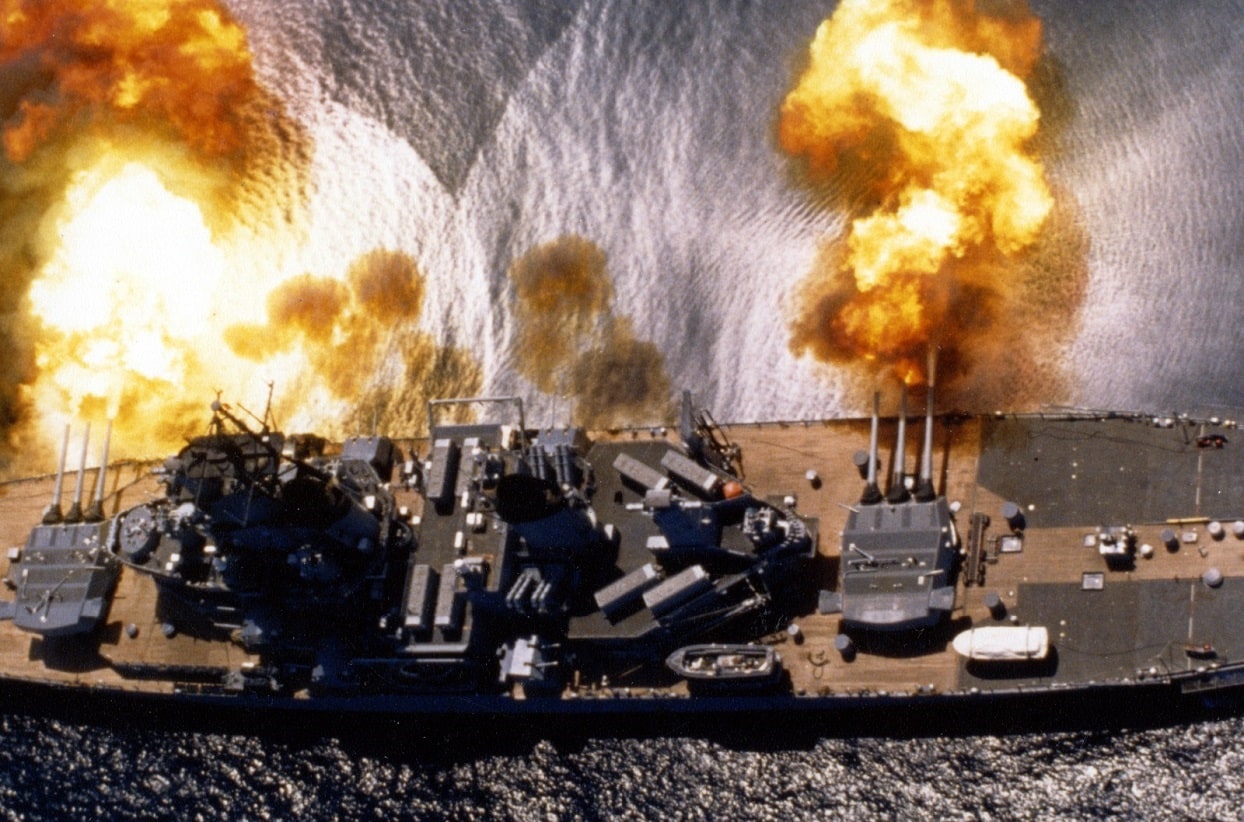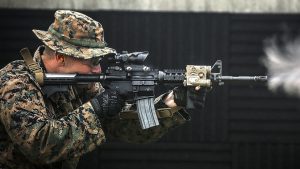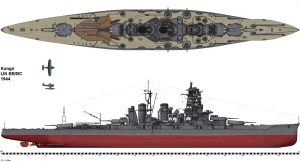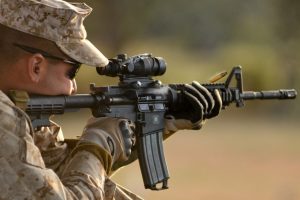The 16-inch guns of the Iowa class had seen extensive use during their service, with the first angry shots fired from them at Truk Atoll.

USS Iowa (BB-61) Fires a full broadside of nine 16/50 and six 5/38 guns during a target exercise near Vieques Island, Puerto Rico, 1 July 1984. Photographed by PHAN J. Alan Elliott. Note concussion effects on the water surface, and 16-inch gun barrels in varying degrees of recoil. Official U.S. Navy Photograph, from the the Department of Defense Still Media Collection.
“It was the massive 16-inch cannons that set the Iowa-Class apart. Amid World War II, the Imperial Japanese Navy (IJN) set sail with two of the largest and most powerful battleships ever built. Nine 45.7cm (18 inches) guns were installed in Yamato and her sister ship, Musashi. Every one of those huge naval cannons could fire a shot up to 27 miles (43.5 km) away. Both cruisers were destroyed by American planes, and the Battle of Leyte Gulf was the only occasion IJN ships had fired such guns in anger.
The penultimate class of American battleships, the Iowas, were equipped with smaller but still highly effective main guns that saw service throughout World War II and beyond. The 1991 Gulf War in Iraq was the final conflict in which they used weapons of this type.
After Japan failed to ratify the London Naval Treaty in 1935, the U. S. Navy saw the impending conflict as a certainty and began developing a new class of battleship. Instead of more lethal weaponry, the larger displacement of 45,000 tonnes was used for auxiliary power and armor plating.
The Navy decided it had reached a satisfactory level of the main armament for battleships, thus. At the same time, the size and number of guns were not increased; the quality was by creating the new 50-caliber 16-inch (406mm) Mark 7 cannons to replace the South Dakota-45-caliber class’s armaments.
The new Iowa class of “fast battleships” combined speed and firepower to accompany a carrier force. They could travel up to 33 knots and were equipped to the teeth with nine 16-inch cannons and ten pairs of 5-inch machine guns. The Iowa class, like all battleships, was equipped with thick armor to withstand shellfire, explosives, and torpedoes from below. The new generation of war wagons had the same level of protection as their predecessors, but their design followed more traditional principles. The Iowa class also had a redesigned turret that reduced weight by 864 metric tonnes (nearly 850 metric tonnes).
The Mark 7 guns were 50 calibers long, or 50 times their 16-inch bore diameter, making the barrels 66.7 feet (20.3 meters) in total length (chamber to muzzle), which may seem like a lot. Still, the complex naming scheme emphasized the weapons’ enormous size. The unloaded weight of each cannon was around 239,000 lb (108,000 kg), whereas the loaded weight was 267,900 lb (121,500 kg). Importantly, the Mark 7 gun could launch projectiles weighing between 1,900 and 2,700 pounds (860 and 1,220 kg) at a maximum velocity of 2,690 feet per second (820 m/s). At full blast, the missile could travel up to 24 miles (39 km) and stay in the air for about a minute and a half.
Despite this being a widespread misconception, the Iowa class is also commonly called a “three-gun turret” ship. Calling these turrets “three-gun” was more accurate than “triple” because each barrel could be raised and fired separately. Moreover, each gun’s elevation could be adjusted from five degrees down to forty-five degrees up at a rate of twelve degrees per second. Also, the turrets could spin through four complete revolutions in seconds, giving them a total range of around 300 degrees.
Iowa class battleships could unleash a barrage from any of their nine cannons or fire them individually. There’s a common belief that sailing sideways is necessary while engaging in broadsides, yet this is an illusion. Considering the warship’s size and the water’s buoyancy surrounding the hull, the vessel would have remained perfectly still.
The Mark 7 gun had two primary projectiles: an armor-piercing projectile that weighed 2,700 pounds and could pierce up to 30 feet of concrete and a shore bombardment projectile that weighed 1,900 pounds.
The 16-inch guns of the Iowa class were utilized frequently throughout their careers, with the first “angry” shots being fired in February 1944 near the Truk Atoll when the USS Iowa (BB-61) and USS New Jersey (BB-62) fought the IJN destroyer Nowaki from a distance of 35,700 yards (32.6 km). The straddle was the farthest distance ever performed.
usU.S. battle wagons were instrumental in the sinking of the Imperial Japanese Navy’s (IJN) light cruiser Katori, destroyer Maikaze, and auxiliary cruiser Akagi Maru during that conflict part of Operation Hailstone. To date, this is the only recorded encounter between battleships of the Iowa class on the water’s surface.
They also used Mark 7 in several Pacific War landings to strike land objectives. In addition to the Vietnam War and the Lebanese Civil War, they also utilize weapons during the Korean conflict. During Operation Desert Storm, they fired over a thousand rounds from the Mark 7 cannon to support ground operations, marking its final use in anger.






